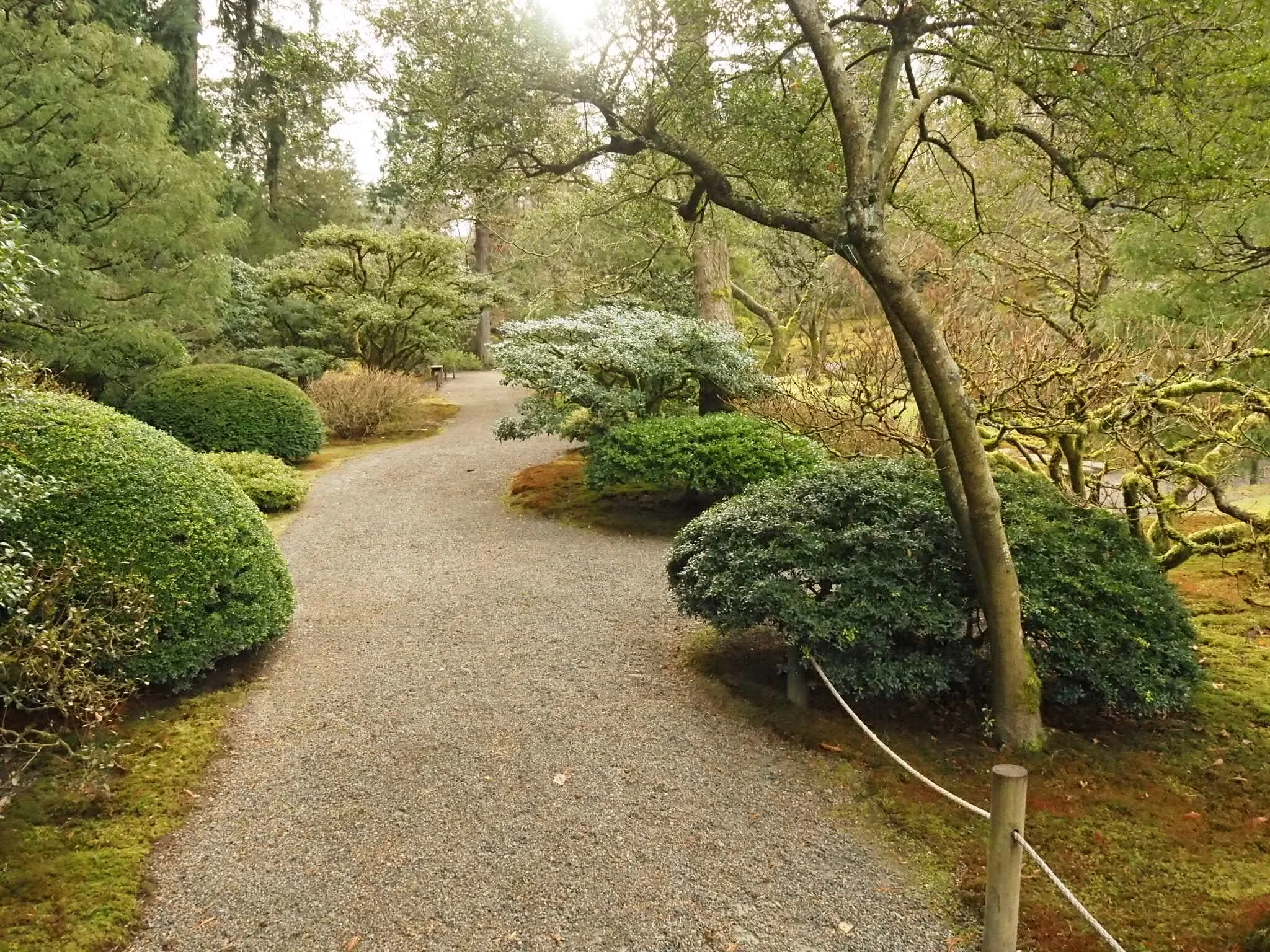Japanese Holly: A Subtle Gem
By Corinne Kennedy
Ilex crenata ‘Convexa’ in the Entry Courtyard (photo by Corinne Kennedy)
Japanese holly (Ilex crenata) is a broadleaf evergreen shrub that doesn’t call attention to itself. With insignificant flowers, small leaves and small black berries, it lacks the distinguishing characteristics that attract potential buyers to showier plants. In contrast to English holly – a bold plant with large, sharply-pointed leaves – Ilex crenata is slow-growing, fine-textured, and not at all invasive. However, despite its unobtrusive appearance, Japanese holly is one of our most important ornamental plants. More than 500 cultivars (cultivated varieties) have been developed -- and given names (or sometimes only numbers). The Seattle Japanese Garden includes seven cultivars, in addition to the species plant, which grows in Areas C, D, K, O, V & W (map).
This valuable shrub is sometimes referred to as boxleaf holly, due to its superficial resemblance to true boxwood (plants in the genus Buxus, also characterized by small evergreen leaves). In Japan, Ilex crenata is known as inu tsuge (which means “false boxwood”), but I believe that it’s a superior plant. It has darker, more lustrous foliage than that of boxwood, and is less prone to insect and disease problems.
Ilex crenata is native to Japan, Korea, China, Taiwan, the Philippines and the Himalayas, and displays great variability (in height, habit, and leaf size & shape) over its range. In the wild, it grows in remarkably diverse habitats – including mountains, seashores, swamps, and dense forests. Japanese holly’s popularity can be attributed in large part to this remarkable adaptability, and to its ease of propagation – from both cuttings and seeds.
Ilex crenata was introduced to the West in 1864, and to the United States in 1898. Later, in the 1930s, it was widely promoted by Boston’s Arnold Arboretum. By the end of the century, “Nurseries and landscape architects found the species and its cultivars adaptable and useful in the landscape as foundation plants, in mass plantings and hedges, and for general use. Today, Japanese holly is one of the most popular landscape plants in the United States.” [Hollies: The Genus Ilex, by Fred C. Galle (1997).]
The species name, crenata, means “with shallow, rounded teeth,” and describes the subtle indentations edging its small green leaves. Firm-textured and usually egg-shaped, they’re arranged alternately on the stem. Both male and female plants bloom in early summer with small, white flowers that are referred to as “insignificant.” When plants of both sexes are present, small, round purple-black fruits may appear. Some cultivars, however, do not flower or fruit reliably.
Although it prefers sun, and light, moist, slightly acid soil, Ilex crenata is tolerant of shade, drought and urban conditions – particularly in temperate climates like the Pacific Northwest. Most forms are hardy to at least USDA Zone (minimum temperature, 0-10 degrees F.)
Ilex crenata ‘Mariesii’ in Area F
Foliage and berries of Ilex crenata 'Mariesii" (photo by Chie Iida)
As mentioned above, the species plant (Ilex crenata) is variable in its characteristics, and as a result isn’t commonly available. On the other hand, four of the seven cultivars planted in our garden should be easy to find at retail nurseries. ‘Convexa’ (Areas A, G, I, K, M & V) is a female form of Japanese origin, with cupped (convex) leaves. It’s more cold-hardy than the species plant, and often fruits heavily. ‘Helleri’ (Areas H, J & Q) is a dwarf form, with a spreading habit and leaves that are less lustrous than those of most other cultivars. ‘Mariesii’ (Area F), previously called ‘Nummularia’ in Arboretum records, is a slow-growing, upright, female form. ‘Sky Pencil’ (Area ZZW) is a narrowly upright form that doesn’t need pruning to form a narrow hedge or screen. The remaining three cultivars are difficult or impossible to find.
Ilex crenata is planted extensively in landscapes, but because of its stiff habit, is less useful for bonsai. In Japanese-style gardens, including our own, it’s sometimes allowed to achieve a natural shape, or else is pruned to reveal the underlying architectural of its branching. It also takes very well to sheering, so it’s often shaped into simple semi-spherical forms that are distinct from Western-style topiary.
Japanese holly tamamono along the Eastern path of the garden
The most important are tamamono (a low, mounded shape at least twice as wide as tall) and o-karikomi (a wavelike shape of connected tamamono forms). Evergreen azaleas, especially the late-blooming Satsuki types, are the plants most commonly shaped into these forms, but Japanese holly is also used. Shaped as tamamono, both plants contribute mass and stability to our Seattle Japanese Garden, and play a part in creating the simplicity and tranquility that visitors encounter here.
Corinne Kennedy is a Garden Guide, frequent contributor to the Seattle Japanese Garden blog, and retired garden designer.




